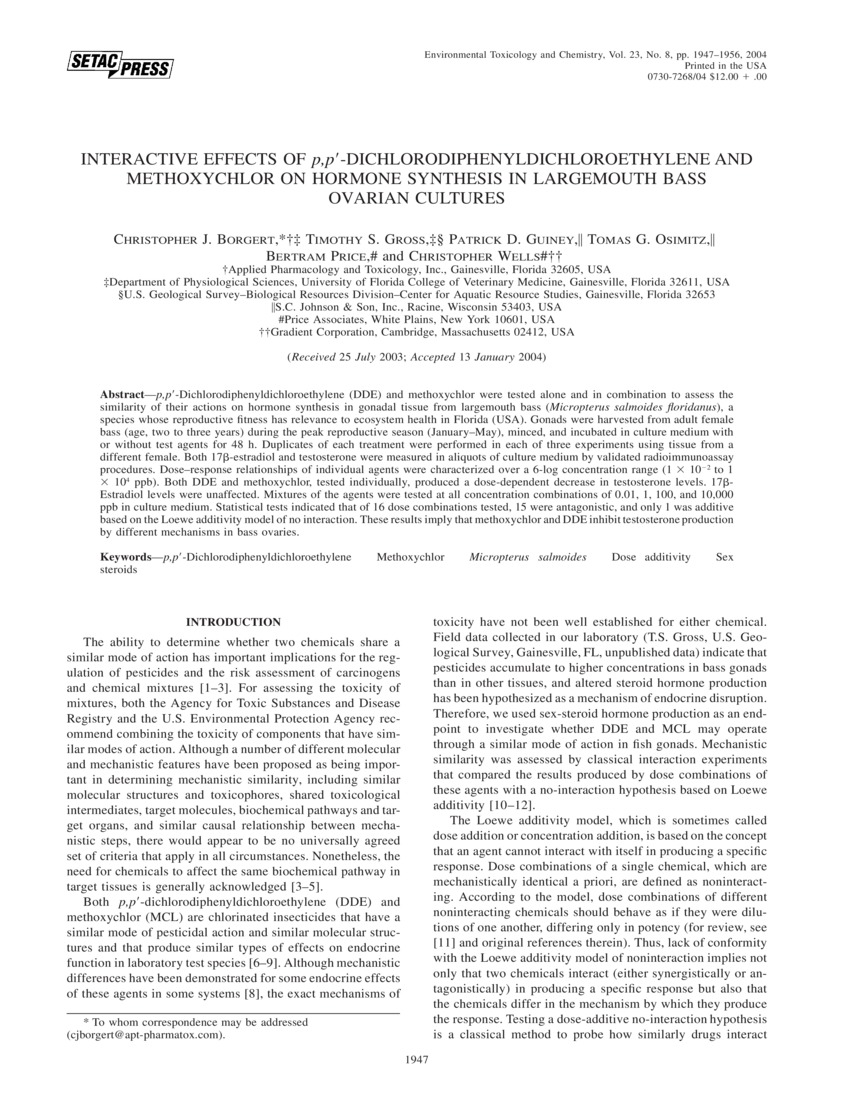Journal Article
AccessInteractive Effects of p,p'-Dichlorodiphenyldichloroethylene and Methoxychlor on Hormone Synthesis in Largemouth Bass Ovarian Cultures
p,p′-Dichlorodiphenyldichloroethylene (DDE) and methoxychlor were tested alone and in combination to assess the similarity of their actions on hormone synthesis in gonadal tissue from largemouth bass (Micropterus salmoides floridanus), a species whose reproductive fitness has relevance to ecosystem health in Florida (USA). Gonads were harvested from adult female bass (age, two to three years) during the peak reproductive season (January–May), minced, and incubated in culture medium with or without test agents for 48 h. Duplicates of each treatment were performed in each of three experiments using tissue from a different female. Both 17β-estradiol and testosterone were measured in aliquots of culture medium by validated radioimmunoassay procedures. Dose–response relationships of individual agents were characterized over a 6-log concentration range (1 × 10−2 to 1 × 104 ppb). Both DDE and methoxychlor, tested individually, produced a dose-dependent decrease in testosterone levels. 17β-Estradiol levels were unaffected. Mixtures of the agents were tested at all concentration combinations of 0.01, 1, 100, and 10,000 ppb in culture medium. Statistical tests indicated that of 16 dose combinations tested, 15 were antagonistic, and only 1 was additive based on the Loewe additivity model of no interaction. These results imply that methoxychlor and DDE inhibit testosterone production by different mechanisms in bass ovaries.
Publisher - Wiley Interscience
Subjects - Fish, Largemouth Bass, Micropterus salmoides floridanus; Chemical, p,p′-Dichlorodiphenyldichloroethylene; Chemical, Methoxychlor; Sex Steroids
Citation: Borgert CJ, Gross TS, Guiney PD, Osimitz TG, Price B, Wells C. 2004. Interactive Effects of p,p'-Dichlorodiphenyldichloroethylene and Methoxychlor on Hormone Synthesis in Largemouth Bass Ovarian Cultures. Environ. Toxicol. Chem.; 23(8):1947-1956
